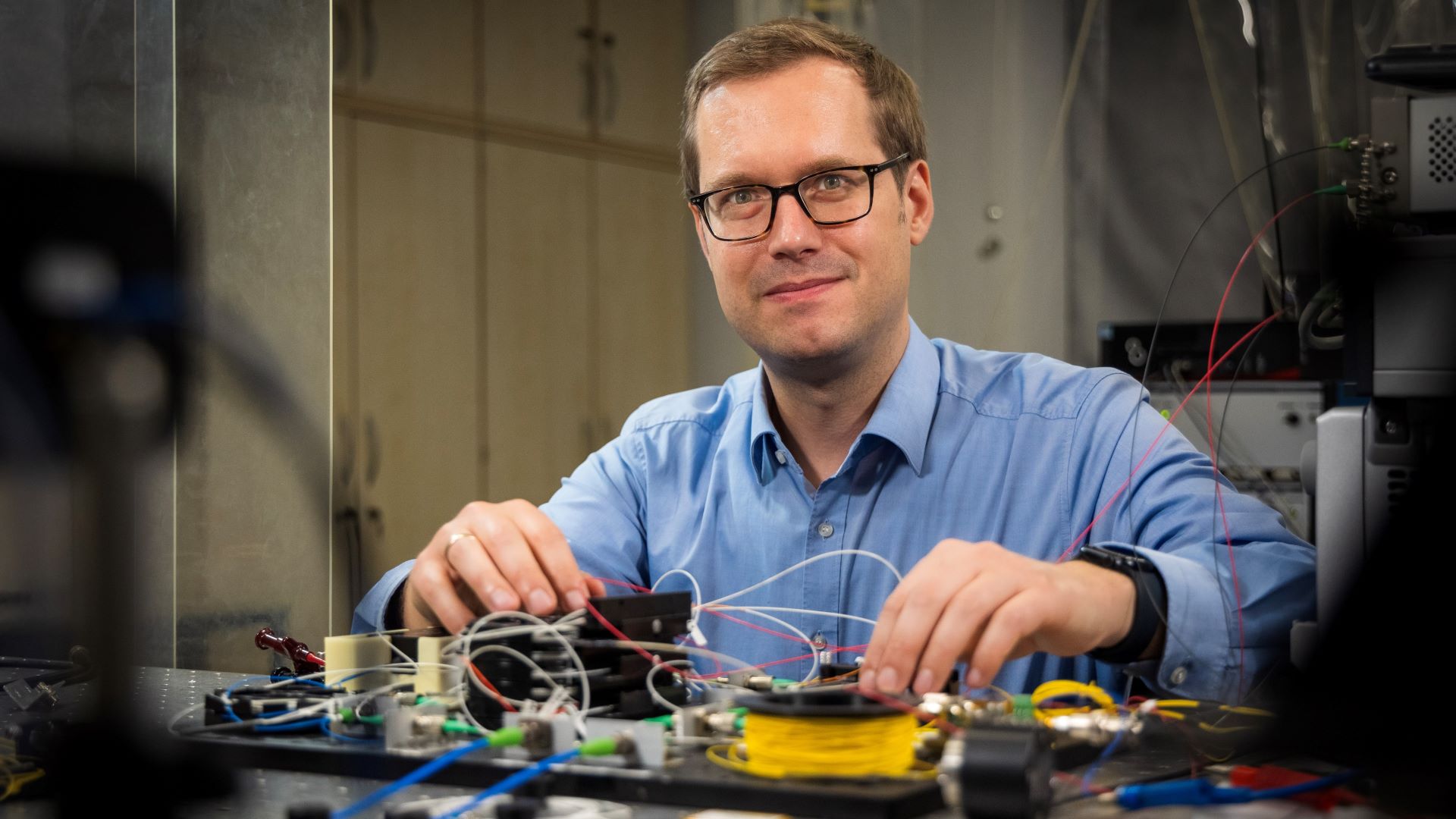
Why I do research: Jan Balzer
A new approach to terahertz
- von Jennifer Meina
- 18.10.2023
Whether it's dicey firefighting missions, the detection of viruses in the air or the use of 6G in mobile communications - the possibilities of terahertz technology are huge. However it is still mostly a matter of the future. At UDE, Prof. Dr. Jan Balzer is working on cost-efficient systems and novel applications.
Professor Balzer, what are you currently working on?
I am working on a method to classify materials in a room by means of a drone as part of the MARIE Collaborative Research Centre. This can enable the fire brigade to detect sources of danger, such as gas cylinders, at an early stage, even in the case of heavy smoke development. Another example is the detection of viruses in the air. So called "Microflyers" are to be functionalized in such a way that certain viruses stick to the surface and thus change the reflected terahertz (THz) radiation. This change can currently be detected at a range of about one meter and is intended to detect viruses in the future before a person becomes infected.
What is special about the terahertz frequency range?
The THz frequency range is roughly between microwave and infrared radiation. The exciting thing is that it has only been developed for laboratory applications since the 1990s. The first terahertz image was taken in 1995 and is thus about a hundred years younger than the first X-ray image. However, the generation of THz radiation is still very complex, since neither classical concepts from high-frequency technology nor from optics work. Therefore, this frequency range is also called the "THz Gap".
My research work aims, among other things, to open up the terahertz frequency range through cost-efficient systems and to identify new fields of application.
What do you find most fascinating about your work?
Even as a child, I was fascinated by technical devices and their functions I always wanted to understand how, for instance, a video recorder or the telephone worked. My studies in electrical engineering showed me the ingenious ideas behind many things that we take for granted in our everyday lives.
In my research, I go one step further and consider what systems might look like that can solve a particular problem such as detecting viruses in the air. The idea is followed by an initial theory, then a simulation and finally the technical realization. Having developed a functional demonstrator in the laboratory at the end of a long project, that does something that was not possible before is my greatest motivation.
How did you get involved in the terahertz research field?
I completed my doctorate in the field of ultrafast semiconductor lasers. As part of a BMBF-project, the laser system I developed was used to replace a more complex laser system in a terahertz spectrometer. This was my first contact with the terahertz range. What was particularly exciting for me was that terahertz radiation often behaves differently from radiation I was used to from lasers. For example, THz radiation penetrates typical packaging materials or even clothing, but is harmless to humans compared to X-rays.
When I moved to UDE, I came into contact with engineers with a radar and communications background. This ultimately led to the idea of microflyers for detecting viruses. The COVID-19 pandemic also played a role here.
Where is the greatest potential in terahertz research?
Terahertz is a fairly young research field with correspondingly strong growth potential. Currently, many new applications are being tried out in the industrial environment. Because the system costs are too high, there has been no consistent implementation so far - with a few exceptions, such as determining the thickness of paint layers in the automobile sector. There is great potential here for cost-efficient systems in the future. On the other hand, the terahertz range will become established in one form or another in connection with 6G, i.e. the 6th generation mobile phone network, as this enables previously unattained data rates.
More information:
https://www.uni-due.de/nts/terahertz-1
Prof. Dr. Jan Balzer, Tel. 0203/37 9-4406, jan.balzer@uni-due.de
More about the series Why I Do Research: https://www.uni-due.de/why-i-do-research/
